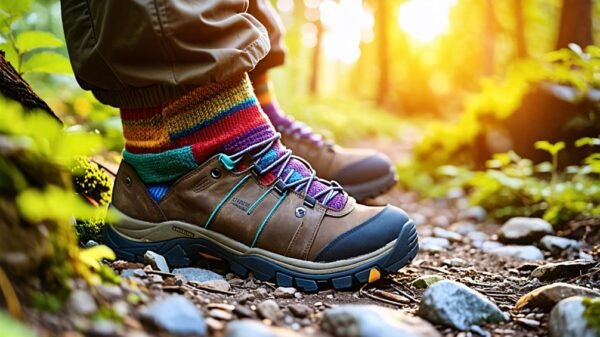Mastering the Compass: An Outdoor Essential for Every Adventurer
A compass is an essential tool for outdoor enthusiasts, from weekend hikers to seasoned adventurers. While smartphones and GPS devices have made navigation easier, these technologies are not infallible. The timeless reliability of a compass remains crucial, offering an accurate way to find your bearings in the wild. Whether you’re setting out on a solo trek through the mountains or exploring a new trail with friends, understanding how to use a compass effectively can transform your outdoor experience.
Unveiling the Mechanics of a Compass
At its core, a compass operates on a simple principle: magnetism. Earth is surrounded by a magnetic field, with magnetic north and south as its two poles. A compass features a magnetized needle that aligns itself with the Earth’s magnetic field, constantly pointing toward magnetic north. This fundamental design allows hikers to determine directions, even in the most remote natural settings.
However, there are nuances to consider. Magnetic deviation arises from interference by metal objects or electrical fields, which can skew a compass reading. This commonly occurs in vehicles, boats, or even near large rocks. Hikers should be aware of their surroundings and how nearby objects may affect their compass. Meanwhile, variation, also known as declination, refers to the angle difference between true north and magnetic north. Adjusting for this variation is crucial when navigating with maps and compasses.
Adjusting for Declination: A Quick Method
Understanding declination is vital for accurate navigation. Depending on your location, magnetic north can differ significantly from true north. In areas with an easterly declination, you need to reduce your compass reading, while settings with a westerly declination will require you to add degrees. Most maps annotate the declination so that hikers can make quick adjustments. Keeping a declination card handy can make navigating easier and more precise.
How to Use Your Compass with Confidence
Using a compass may seem intimidating at first, but it breaks down into manageable steps. Whether you’re taking a bearing from a map or using a landmark in your environment, the procedure remains straightforward.
To take a bearing from a map:
- Lay your map flat alongside your compass.
- Identify your current location and ultimate destination.
- Draw a straight line between these points.
- Position the compass along the line, ensuring the travel arrow points toward your goal.
- Rotate the compass bezel until the orienting arrow aligns with north on your map.
- Hold your compass flat, turn your body until the red magnetic needle points to the orienting arrow. Now, your travel arrow indicates your direction!
For a sighting methodology:
- Level your compass and point the direction of the travel arrow toward a visible landmark.
- Adjust the dial until the orienting arrow aligns with the red magnetic needle.
- Keep them aligned as you walk toward your target.
Essential Reasons to Pack a Compass on Your Hikes
While a compass’s primary role is to provide direction, its utility extends far beyond that. It equips hikers with the information needed to orient their maps and identify their current position. Moreover, in the event of becoming disoriented on the trail, a compass can lead you back to familiar territory, like your vehicle or campsite.
One might be tempted to rely solely on electronic devices for navigation, yet these devices come with their challenges. Battery life can die, environments may hinder signal strength, and screens can crack. A compass, however, functions unaffected by technological glitches, ensuring you can navigate even in challenging conditions.
Choosing the Right Compass for Your Adventures
Selecting an appropriate compass is another important task for any outdoor enthusiast. Consider how and when you will use it: will it serve as a backup device or your main navigation tool? Assess its exposure to conditions like rain or rugged terrain.
Features to look for in a compass include:
- Declination adjustment: Makes modifications easier.
- Sighting mirror: Essential for precise bearings.
- Clinometer: Useful for ranging on slopes.
- Global needle: A versatile option for international trips.
A good compass should be compact yet functional, fitting easily into a pack or pocket as you explore the great outdoors.
Without a doubt, mastering the compass enhances your outdoor adventures. This reliable tool not only ensures you remain on course but also enriches your appreciation for the natural world. So, before your next hike, make sure to familiarize yourself with your compass. It’s not just about getting from point A to point B; it’s about experiencing the journey along the way.









































